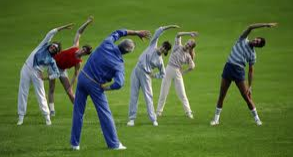
Wellness Award Programs Past, Present and Future
According to Incentive magazines “Safety and Wellness IQ,” almost 50% of companies today have some sort of employee wellness program in place. The biggest difference today is that most CEOs while eager to invest in wellness efforts, are demanding a better return on these investments. Healthcare costs and healthcare insurance are high, too high, and companies are looking for everything they can do to reduce them. With an aging workforce these numbers may only get higher.
A study conducted by the Global Wellness Institute, “2016 Future of Wellness at Work”, states the economic enormity of worker health is approaching 10-15% of global economic output. Some economist’s estimate this can amount to over $2 trillion each year. According to the research company Gallup, the cost to U.S. employers is $153 billion a year just counting workdays missed. Whether these global estimations are pertinent to your company or not, unhealthy workers have been a persistently growing problem.
Wellness efforts of the past amounted to websites with articles about exercise and nutrition with links to other resources; and wellness coaches and or company nurses who did health risk assessments (HRA). This communication effort often left it up to the worker to motivate them to “get healthy”. Today, doing an HRA is just the starting point, the admission ticket to the program. From a push using incentives to get employees involved by taking the HRA, today the effort is on participating, doing something to improve your health. Programs goals have changed from getting employees to join to improving health and fitness and thus reducing costs.
Participative Goals
Another change in programs is not just focusing on people who are unhealthy, but getting to the rest of the employee base to ensure they don’t fall into chronic health conditions in the future. Today it’s about what your programs stress, what you want your employees to do. Incentives “2016 Safety & Wellness IQ” survey showed the top activities a program encourages are:
| Activity | Included in Programs |
| Physical fitness (walking, running, cycling, swimming, ets. | 68.5% |
| Regular Medical Checkups | 64.4% |
| HRA Survey | 56.3% |
| Smoking cessation | 54.8% |
| Monitoring Health Issues (hypertension, diabetes, etc.) | 49.3% |
| Gym, Fitness Classes | 41.1% |
| Obesity Reduction | 39.7% |
As all of these goals have specific and easy to obtain measurement are participative and outcomes based, awards can be easily used to achieve thems. By using a wellness portal with video to provide advice and material on all of these objectives, you can appeal to your entire workforce, especially millennials. Challeng goals and team objectives can also add to the interest because you can have groups supporting each other.
What Awards to Use
Incentives “Safety & Wellness IQ” survey, the top rewards in wellness programs are:
| Award Type | Included in Program |
| Retail & Bank Gift Cards | 58.9% |
| Merchandise | 41.2% |
| Cash | 27.9% |
| Insurance Premium Reduction | 25.5% |
| Individual Travel | 10.3% |
| Experiential Awards (Spa treatments, etc.) | 7.4% |
| Group Travel | 4.4% |
It’s no surprise that gift cards are the number one award group as the vast majority of individual budgets for these types of achievable objectives are less $50 to $100 ea. And gift cards are by far the best value in that denomination of award especially considering the high margins on merchandise that tends to deflate the value and group or individual travel awards that are quite expensive.
Communications and Technology Are Key
Communicating the range and complexity of health services can present a challenge. Individual motivation or apathy, sensitive health issues, and the cultural, geographic and demographic differences in your organization can all pose problems that need to be addressed when deciding on the communication strategy. Intranet portals, email campaigns, mobile devices, well thought out promotional items and the use of a host of Technology apps that speak to fitness can all help to make your program a success.
Activity trackers and wearable devises such as FitBit and smart watches are simple ways for employees to measure performance against goals. The American Council on Exercise reports that “people are 30 to 40 percent more likely to be active just by wearing a fitness tracker.” By using gift cards redeemable for Amazon and other online suppliers you can help offset the cost of activity trackers that can be expensive. Two top apps that unlock this ability for iPhones and Android devices are Argus and Pacer, both free, as are a host of others..
Safety programs for years have used triggers to motivate intended behaviors to avoid accidents. Wearables are a great trigger. The device on your wrist, the blinking light and vibration are physical reminders to change your behavior.
The Future
When you add financial planning, life style education, stress management and life-stage management to the equation, you move into the future from the wellness of the past to the entire well-being of the employee in the future. With a wellness program designed to change every day habits and reinforce improvement, these holistic well-being programs can help improve business outcomes like productivity and employee engagement, essentially the health of the business.
Companies that have seen measurable success know that these wellness programs take time to show results. They are long term objectives with very positive long term consequences.
There is abundant evidence to support the return on investment evident in the wellness programs of today. A quick search of the net will provide many. How is your wellness effort going?